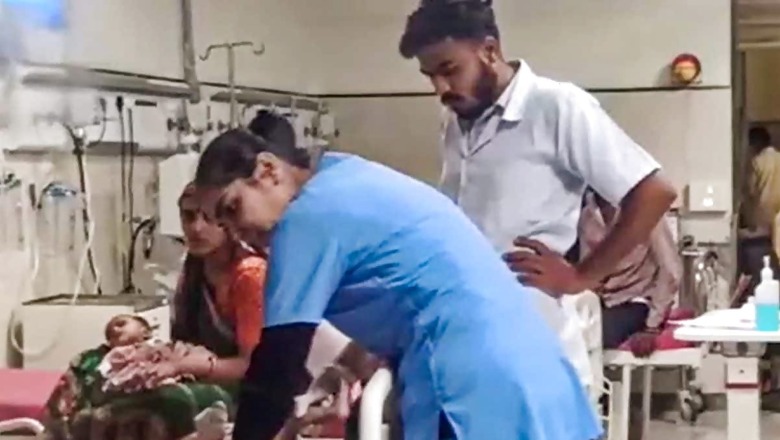
views
A month after the outbreak of Chandipura Acute Viral Encephalitis (CHPV) in Gujarat, the virus has now been detected in Rajasthan.
The latest case, confirmed in Dungarpur district, has prompted the Rajasthan Medical and Health Department to issue an urgent advisory aimed at curbing the spread of the virus.
In Gujarat, a total of 133 cases of viral encephalitis was reported in a month, out of which 47 was caused by the Chandipura virus. The outbreak has claimed at least 56 lives, with a quarter of these deaths directly linked to Chandipura, according to state health officials.
“Almost all the patients are children. As far as I know, this virus affects only children,” Gujarat Health Commissioner Harshad Patel told news agency Reuters.
Rajasthan’s Medical and Health Minister Gajendra Singh Khinvsar has instructed state authorities to implement stringent measures to control the virus spread. The department has instructed the principals of all the medical colleges of the state, chief medical and health officers and chief medical officers to ensure necessary action according to the advisory.
What is Chandipura Virus?
First identified in 1965 in the village of Chandipura, Maharashtra, the virus belongs to the Rhabdoviridae family, which also includes the rabies virus. The virus gained widespread attention during a major outbreak in Andhra Pradesh in 2003, affecting 329 children, with 183 fatalities.
Transmitted primarily through sand-fly bites, particularly from species like Phlebotomine sandflies and Phlebotomus papatasi, as well as some mosquito species such as Aedes aegypti, the virus resides in the insects’ salivary glands. The virus can also infect other vertebrates, including domestic animals, through bites.
According to the Health Ministry, the Chandipura virus is transmitted by vectors such as sandflies and ticks, and the only available measures to combat the disease are vector control, maintaining good hygiene, and increasing awareness.
Impact Of Climate Change
According to a report by The Conversation, the recent resurgence of the Chandipura virus in India is likely related to climate change, with warming temperatures facilitating its spread.
In recent years, rising temperatures have contributed to an increase in vector-borne diseases, including Zika, dengue, and Nipah viruses. The warming climate may be exacerbating the spread of these diseases by expanding the range of the vectors responsible.
Symptoms and Treatment
Initial symptoms of Chandipura virus infection are similar to the flu and can rapidly progress to severe encephalitis, coma, and death within 24 to 48 hours. Children under 15 are especially at risk. The infection is marked by high fever, seizures, diarrhea, vomiting, convulsions, and altered mental status. Severe cases can lead to coma and death.
According to a report by trio scientists, the primary cause of death for most infected patients is encephalitis, an inflammation of active brain tissues. Some studies from India have also reported other symptoms such as respiratory distress, bleeding tendencies, or anaemia.
Currently, there are no antiviral treatments or vaccines available for the Chandipura virus. Preventive measures include vector control, maintaining good hygiene, and increasing awareness about the disease.




















Comments
0 comment